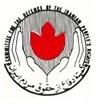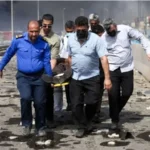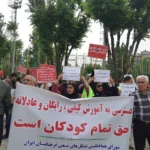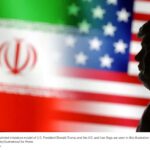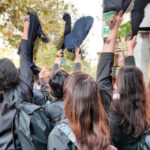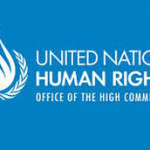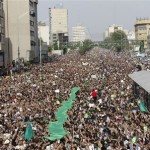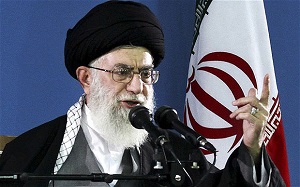
8th November 2015
The inclusion of the Islamic Republic of Iran in the current negotiations in Vienna, regarding the conflict in Syria, marks a significant shift in the way in which the West sees the role of Iran in the Middle East. Iran’s presence is the latest stage in a process that has been going on for some years, as a quiet rapprochement between the United States and the Islamic Republic has been developing.
Since 2000 an influential document, Rebuilding America’s Defenses, published by the neo-conservative think tank, the Project for the New American Century (PNAC), has been the blueprint for all US administrations, including the administration of Barack Obama. The document’s main tenet is that the US should “seek to preserve and extend its position of global leadership” arguing in further detail that, “The true cost of not meeting our defense requirements will be a lessened capacity for American global leadership and, ultimately, the loss of a global security order that is uniquely friendly to American principles and prosperity.”
In response to the current global situation and the rise of popular discontent in many parts of the world, the United States is intensifying efforts to recover economic and military ground, by any means possible. The aim to dominate, by manipulating local reactionary forces, has been a feature of the foreign policy pursued by the US and its strategic allies in various regions, from the Middle East to North Africa and Eastern Europe.
At present the US has significant problems in effectively allocating its resources globally. In this context the significant diplomatic and military policy shift by the US in the Middle East is notable.
From the US perspective, China is clearly the major “risk” for the US objective of being the ‘single’ global superpower. China is highly dependent on external energy resources and the Middle East is a strategic energy source for China. Therefore, maintaining direct control over the Middle East’s flow of oil and gas is a vital geopolitical component of US global strategy.
Central to that strategy in the Middle East has been the shift in the relationship between the United States and the Islamic Republic of Iran. One year before the administration of President Hassan Rouhani took office in 2013, top officials from the US and direct representatives of Iran’s Supreme Leader, Ali Khamenei, were holding regular meetings in Oman.
Those discussions were the starting point for the agreement which has been reached over Iran’s nuclear programme recently and paved the way for Iran’s inclusion in the Syria talks.
Over the past three years negotiations between the US and Iran have been on the basis of an increasingly weak bargaining position on the part of Iran, as international sanctions have crippled the Iranian economy. The US has taken full advantage of its dominance by forcing Iran to subscribe to the US plan for the New Middle East. This is a major strategic victory for the US as it now holds powerful leverage over Iran.
From the Islamic Republic’s perspective, it has now gained sufficient breathing space to continue its rule by suppressing internal opposition. The lifting of sanctions, and the economic relief which it will bring to the Iranian people, is being used by the regime as evidence of its international influence. The regime has found an opportunity to strengthen its grip on power as well as being able to claim that it is playing a ‘constructive’ role within the United States’ plan for the New Middle East. Inclusion in the Syria talks is the latest manifestation of this undeclared ‘alliance’ between the United States and Iran.
Progressive forces in Iran have welcomed those elements of the ‘5+1 Nuclear Deal’ that will lift the threat of war and will lead to the eventual easing of the crippling economic sanctions, the burden of which is overwhelmingly on the shoulders of the ordinary and working people of Iran.
However, regardless of the promises of post-agreement economic recovery, the people of Iran will be facing neoliberal reforms with harsh consequences and will have to suffer the continued brutal oppression of trade unionists and the violation of human rights. This is not an area that the United States has sought to take issue with in its discussions with the Iranian leadership.
Evidence of ongoing human rights abuses are discovered regularly. Shahrokh Zamani, a trade union activist died in prison in suspicious circumstances recently. Executions are continuing. Iran is top of the list for the number of executions per capita in the world.
The Iranian leadership may find itself at the table in Geneva pontificating about the future of the people of Syria. However, for the people of Iran, the Islamic Republic has much to do to set its own house in order. The people of Iran need the continued international support and solidarity of progressive forces across the globe in their fight for democracy, sovereignty, and social justice.

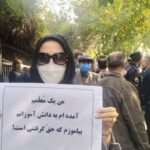
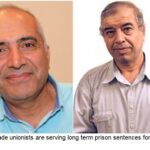
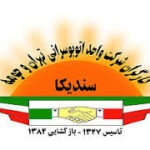


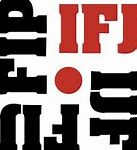



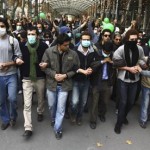
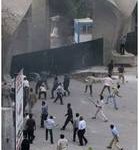
 Posted in
Posted in 